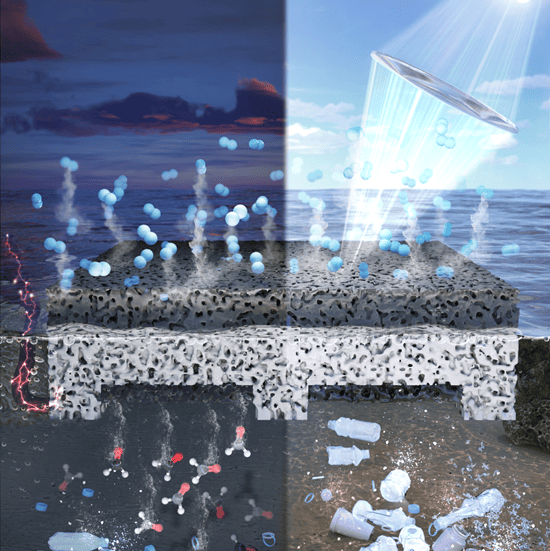2024 Closed-loop photo- and electrocatalysis using floatable hierarchical hydrogel device for efficient waste-derived fuel production
본문
- Journal
- Device
- Vol
- 2
- Page
- 100515
- Year
- 2024
Continuous and sustainable fuel production is essential for transitioning to a green-energy society. Solar-fuel production via photocatalysis is renewable but limited by vulnerability to weather dependence and suboptimal efficiency, necessitating an innovative solution. We present a feedback-controlled closed-loop system integrating photo- and electrocatalysis within a compact, floatable device. This system compensates for solar-fuel production shortfalls with electrochemical methods, optimizing catalyst pairings for high activity, selectivity, and durability. The unique floatability maximizes solar-to-fuel conversion efficiency with gas-liquid interface-operating photocatalysts and fully utilized submerged electrocatalysts. This dual-mode elastomer-hydrogel device achieves a plastic-waste-reforming activity of 269 mmol-H2/h⋅m2 using concentrated sunlight and also demonstrates nearly 100% Faradaic efficiency and selectivity in formate production. Scaling up to 1 m2 yields 23.7 mmol/h and 3.05 L/day hydrogen from polyethylene terephthalate (PET) bottles under natural sunlight, maintaining stable production over a month. This closed-loop system shows a promise for steady and economically viable fuel production.

